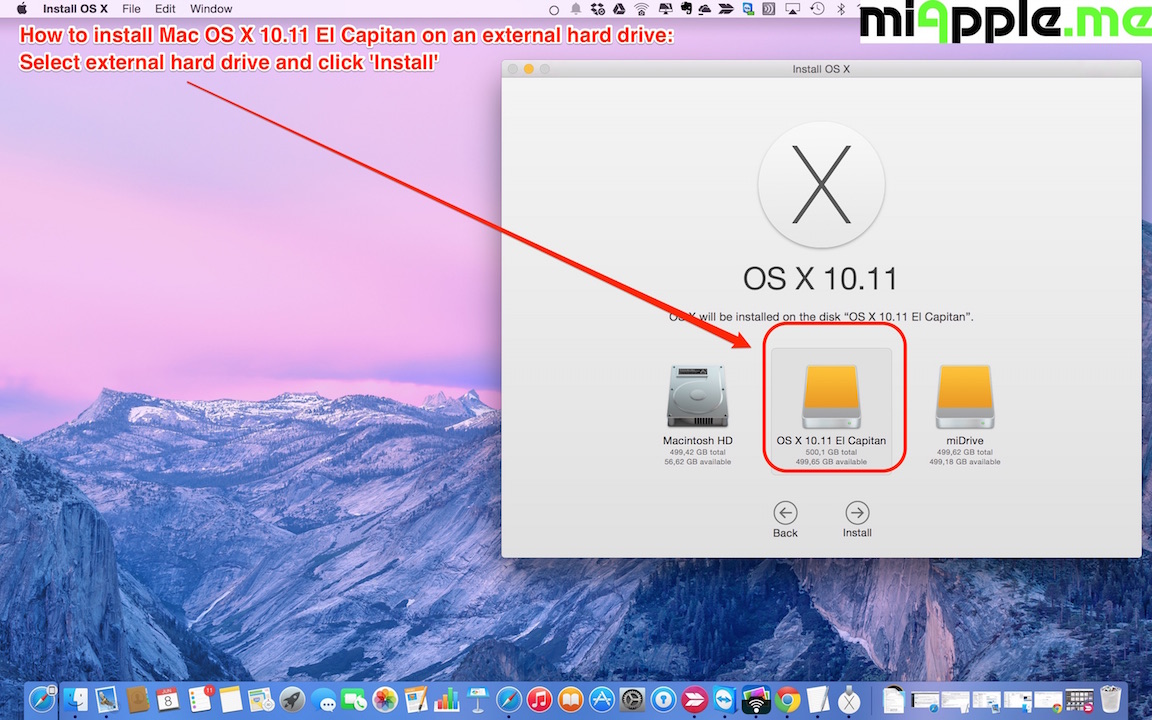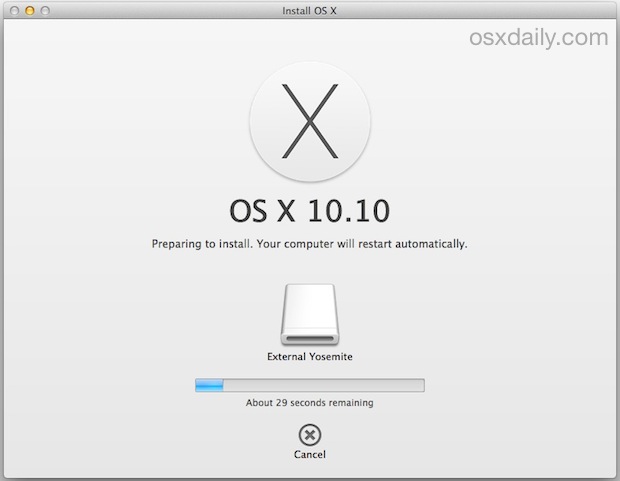What you need to install Windows 10 on Mac
Install Windows on Mac so you can jump back and forth from one operating system to another on the same computer. By now, the practice is well-established and Windows can work on Mac well. In this article, we’ll have a deep look at installing Windows on Mac. $ brew install git. Apple ships a binary package of Git with Xcode. Binary installer. Tim Harper provides an installer for Git. The latest version is 2.27.0, which was released 6 months ago, on 2020-07-22. Building from Source. If you prefer to build from source, you can find tarballs on kernel.org. The latest version is 2.30.0. Double-click on the package. This will launch an installation wizard for the application. The installation wizard will perform all the necessary tasks to correctly install the application. Once the installation wizard has finished the application will typically be found in the Applications folder, ready to run.
- MacBook introduced in 2015 or later
- MacBook Air introduced in 2012 or later
- MacBook Pro introduced in 2012 or later
- Mac mini introduced in 2012 or later
- iMac introduced in 2012 or later1
- iMac Pro (all models)
- Mac Pro introduced in 2013 or later
The latest macOS updates, which can include updates to Boot Camp Assistant. You will use Boot Camp Assistant to install Windows 10.
64GB or more free storage space on your Mac startup disk:
- Your Mac can have as little as 64GB of free storage space, but at least 128GB of free storage space provides the best experience. Automatic Windows updates require that much space or more.
- If you have an iMac Pro or Mac Pro with 128GB of memory (RAM) or more, your startup disk needs at least as much free storage space as your Mac has memory.2
An external USB flash drive with a storage capacity of 16GB or more, unless you're using a Mac that doesn't need a flash drive to install Windows.
A 64-bit version of Windows 10 Home or Windows 10 Pro on a disk image (ISO) or other installation media. If installing Windows on your Mac for the first time, this must be a full version of Windows, not an upgrade.
- If your copy of Windows came on a USB flash drive, or you have a Windows product key and no installation disc, download a Windows 10 disk image from Microsoft.
- If your copy of Windows came on a DVD, you might need to create a disk image of that DVD.
How to install Windows 10 on Mac

To install Windows, use Boot Camp Assistant, which is included with your Mac.
1. Check your Secure Boot setting
Learn how to check your Secure Boot setting. The default Secure Boot setting is Full Security. If you changed it to No Security, change it back to Full Security before installing Windows. After installing Windows, you can use any Secure Boot setting without affecting your ability to start up from Windows.
2. Use Boot Camp Assistant to create a Windows partition
Open Boot Camp Assistant, which is in the Utilities folder of your Applications folder. Follow the onscreen instructions.
- If you're asked to insert a USB drive, plug your USB flash drive into your Mac. Boot Camp Assistant will use it to create a bootable USB drive for Windows installation.
- When Boot Camp Assistant asks you to set the size of the Windows partition, remember the minimum storage-space requirements in the previous section. Set a partition size that meets your needs, because you can't change its size later.
3. Format the Windows (BOOTCAMP) partition
When Boot Camp Assistant finishes, your Mac restarts to the Windows installer. If the installer asks where to install Windows, select the BOOTCAMP partition and click Format. In most cases, the installer selects and formats the BOOTCAMP partition automatically.
4. Install Windows
Unplug any external devices that aren't necessary during installation. Then click Next and follow the onscreen instructions to begin installing Windows.
5. Use the Boot Camp installer in Windows
After Windows installation completes, your Mac starts up in Windows and opens a ”Welcome to the Boot Camp installer” window. Follow the onscreen instructions to install Boot Camp and Windows support software (drivers). You will be asked to restart when done.
- If the Boot Camp installer never opens, open the Boot Camp installer manually and use it to complete Boot Camp installation.
- If you have an external display connected to a Thunderbolt 3 port on your Mac, the display will be blank (black, gray, or blue) for up to 2 minutes during installation.
How to switch between Windows and macOS
Restart, then press and hold the Option (or Alt) ⌥ key during startup to switch between Windows and macOS.
Learn more
If you have one of these Intel-based Mac models using OS X El Capitan or later, you don't need a USB flash drive to install Windows:
- MacBook introduced in 2015 or later
- MacBook Air introduced in 2017 or later3
- MacBook Pro introduced in 2015 or later3
- iMac introduced in 2015 or later
- iMac Pro (all models)
- Mac Pro introduced in late 2013 or later
To remove Windows from your Mac, use Boot Camp Assistant, not any other utility.
For more information about using Windows on your Mac, open Boot Camp Assistant and click the Open Boot Camp Help button.
1. If you're using an iMac (Retina 5K, 27-inch, Late 2014) or iMac (27-inch, Late 2013) or iMac (27-inch, Late 2012) with a 3TB hard drive and macOS Mojave or later, learn about an alert you might see during installation.
2. For example, if your Mac has 128GB of memory, its startup disk must have at least 128GB of storage space available for Windows. To see how much memory your Mac has, choose Apple menu > About This Mac. To see how much storage space is available, click the Storage tab in the same window.
3. These Mac models were offered with 128GB hard drives as an option. Apple recommends 256GB or larger hard drives so that you can create a Boot Camp partition of at least 128GB.
PowerShell 7.0 or higher require macOS 10.13 and higher. All packages are available on our GitHubreleases page. After the package is installed, run pwsh from a terminal.
Note
PowerShell 7.1 is an in-place upgrade that removes PowerShell Core 6.x and 7.0.
The /usr/local/microsoft/powershell/6 folder is replaced by /usr/local/microsoft/powershell/7.
If you need to run and older version of PowerShell core side-by-side with PowerShell 7.1, installthe version you want using the binary archive method.
There are several ways to install PowerShell on macOS. Choose one of the following methods:
- Install using Homebrew. Homebrew is the preferred package manager for macOS.
- Install PowerShell via Direct Download
- Install from binary archives.
After installing PowerShell, you should install OpenSSL. OpenSSL isneeded for PowerShell remoting and CIM operations.
Installation of latest stable release via Homebrew on macOS 10.13 or higher
If the brew command is not found, you need to install Homebrew followingtheir instructions.
Now, you can install PowerShell:
Finally, verify that your install is working properly:
When new versions of PowerShell are released, update Homebrew's formulae and upgrade PowerShell:
Note
Photograv free trial download. The commands above can be called from within a PowerShell (pwsh) host,but then the PowerShell shell must be exited and restarted to complete the upgradeand refresh the values shown in $PSVersionTable.
Installation of latest preview release via Homebrew on macOS 10.13 or higher
After you've installed Homebrew, you can install PowerShell. First, install the Cask-Versionspackage that lets you install alternative versions of cask packages:
Now, you can install PowerShell:
Finally, verify that your install is working properly:
When new versions of PowerShell are released, update Homebrew's formulae and upgrade PowerShell:
Note
The commands above can be called from within a PowerShell (pwsh) host,but then the PowerShell shell must be exited and restarted to complete the upgrade.and refresh the values shown in $PSVersionTable.

Installing PowerShell using the Homebrew tap method is also supported for stable and LTS versions.
You can now verify your install
When new versions of PowerShell are released, simply run the following command.
Note
Whether you use the cask or the tap method, when updating to a newer version of PowerShell, usethe same method you used to initially install PowerShell. If you use a different method, opening anew pwsh session will continue to use the older version of PowerShell.
If you do decide to use different methods, there are ways to correct the issue using theHomebrew link method.

Installation via Direct Download
Download the PKG package powershell-7.1.0-osx-x64.pkg from the releases page onto yourmacOS machine.
You can double-click the file and follow the prompts, or install it from the terminal:
Install OpenSSL. OpenSSL is needed for PowerShell remoting and CIMoperations.
Install as a .NET Global tool
If you already have the .NET Core SDK installed, it's easy to install PowerShellas a .NET Global tool.

The dotnet tool installer adds ~/.dotnet/tools to your PATH environment variable. However, thecurrently running shell does not have the updated PATH. You should be able to start PowerShellfrom a new shell by typing pwsh.
Install OpenSSL. OpenSSL is needed for PowerShell remoting and CIMoperations.
Binary Archives
PowerShell binary tar.gz archives are provided for the macOS platform to enable advanceddeployment scenarios. When you install using this method you must also manually install anydependencies.
Install OpenSSL. OpenSSL is needed for PowerShell remoting and CIMoperations.
Installing binary archives on macOS
Installing dependencies
OpenSSL is required for PowerShell remoting and CIM operations. You can install OpenSSL via MacPortsif needed.
Note
MacPorts and Homebrew can have problems when used to together on the same system. However,Homebrew does not have a package for OpenSSL 1.0. For more information, see theMacPorts FAQ.
Install the Xcode command-line tools. The Xcode tools are required by MacPorts.
Install MacPorts. If you need instructions, refer to theinstallation guide.
Update MacPorts by running
sudo port selfupdate.Upgrade MacPorts packages by running
sudo port upgrade outdated.Install OpenSSL by running
sudo port install openssl10.Link the libraries to make them available to PowerShell:
Uninstalling PowerShell
If you installed PowerShell with Homebrew, use the following command to uninstall:
Machine For Installing Underground Pipe
If you installed PowerShell via direct download, PowerShell must be removed manually:
To remove the additional PowerShell paths, refer to the paths section in this documentand remove the paths using sudo rm.
Note
This is not necessary if you installed with Homebrew.
Paths
$PSHOMEis/usr/local/microsoft/powershell/7.1.0/- User profiles will be read from
~/.config/powershell/profile.ps1 - Default profiles will be read from
$PSHOME/profile.ps1 - User modules will be read from
~/.local/share/powershell/Modules - Shared modules will be read from
/usr/local/share/powershell/Modules - Default modules will be read from
$PSHOME/Modules - PSReadline history will be recorded to
~/.local/share/powershell/PSReadLine/ConsoleHost_history.txt
The profiles respect PowerShell's per-host configuration. So the default host-specific profileexists at Microsoft.PowerShell_profile.ps1 in the same locations.
Tmnt Installing For Mac 2 Dmg
PowerShell respects the XDG Base Directory Specification on macOS.
Because macOS is a derivation of BSD, the prefix /usr/local is used instead of /opt. So,$PSHOME is /usr/local/microsoft/powershell/7.1.0/, and the symbolic link is placed at/usr/local/bin/pwsh.
Installation support
Installing Office 2016 For Mac
Microsoft supports the installation methods in this document. There may be other methods ofinstallation available from other sources. While those tools and methods may work, Microsoft cannotsupport those methods.
Installation For Microsoft Edge
Additional Resources
